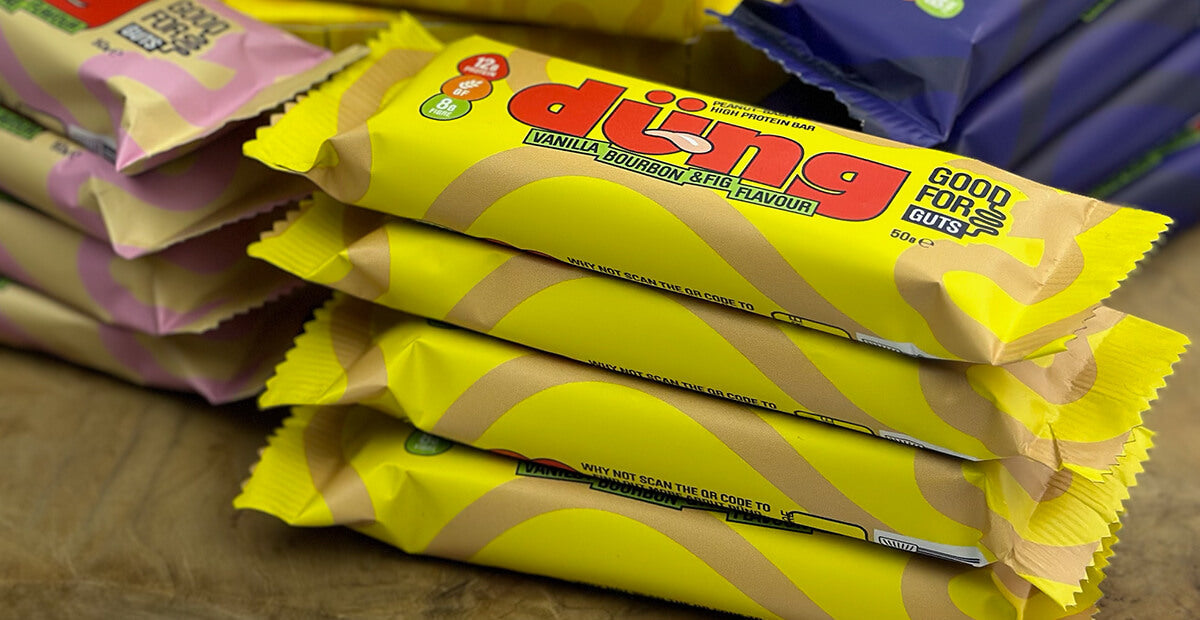

· By Olivia Silverthorne
Nutritional protein bars are here to stay, and here's why:
The protein craze has really taken off in recent years, fuelled by fitness trends, social media, and an overall push for healthier eating.
As consumers become increasingly aware of the importance of protein in their diet, the demand for high-protein foods has skyrocketed. This shift has led to the global protein ingredients market being projected to grow from $77.69 billion in 2022 to $122.17 billion by 2030, reflecting a significant increase in consumer interest and industry expansion (Grand View Research, 2021).
One of the biggest contributors to this trend is the rising demand for nutritional protein bars, which offer a convenient and effective way to meet daily protein needs. Once primarily associated with bodybuilders and athletes, protein bars have now gained mainstream popularity among busy professionals, health-conscious individuals, and even casual snackers.
With more people prioritising protein intake for muscle growth, weight management, and overall well-being, it’s clear that nutritional protein bars are here to stay. But what exactly is driving this long-term demand? Let’s take a closer look.
Whats all the hype about?
Protein is a crucial macronutrient composed of amino acids—the essential building blocks of the body. It plays a fundamental role in muscle repair and growth, enzyme and hormone production, and overall bodily functions.
Our bodies require 20 different amino acids to function properly, but nine of these (known as essential amino acids) cannot be produced naturally. Instead, we must obtain them through our diet, making protein-rich foods a vital part of a healthy lifestyle.
In the past, dietary focus was often placed on calorie counting and fat reduction. However, as recent studies have highlighted the role in which protein supports muscle development, boosts metabolism, aids in weight management, and enhances overall health, consumers are increasingly prioritising protein over other macronutrients.
This shift is evident in recent data: a survey conducted by Savanta (2024) found that nearly half of UK adults have increased their protein intake in the past year, with two-thirds of those aged 16 to 34 making the change. This growing awareness underscores protein’s importance in modern diets, further fuelling the rise of convenient, high-protein snacks like nutritional protein bars.
Convenience meets nutrition
Protein bars have witnessed explosive growth in recent years, becoming a staple for health-conscious consumers seeking both convenience and nutrition. In fact, the number of global product launches featuring high-protein or added-protein claims has surged by nearly 240% over the past five years (Mintel, 2020).
This demand is reflected in the booming protein bar market, which is projected to grow from $5.18 billion in 2024 to $9.55 billion by 2034, with a compound annual growth rate (CAGR) of 6.3% (Global Newswire, 2024).
One of the key drivers behind this growth is the shift in consumer lifestyles. With increasingly busy schedules and the need for on-the-go nutrition, more people are turning to protein bars as a quick, satisfying, and nutrient-dense option. Unlike traditional snack foods, which are often nutritionally poor, protein bars can offer a balanced mix of protein, fibre, and essential vitamins, making them a favoured alternative to sugary or processed snacks.
As the demand for healthier, functional snacks continues to rise, protein bars are no longer just a niche product for athletes—they have become a mainstream choice for students, professionals, people with a busy life style, and anyone looking for a convenient way to stay fuelled throughout the day.
From basic to gourmet: The rise of flavour innovation
But it's not just the consumer base that has changed—the bars themselves have seen a massive upgrade.
In the past, protein bars were limited to a handful of uninspired flavours, mainly plain chocolate, vanilla, or peanut butter. While functional, they lacked variety and excitement.
Now, brands have taken flavour innovation to the next level, offering a range of indulgent yet nutritious options that cater to different taste preferences. Some popular flavour categories include:
- Dessert-Inspired Flavours – Chocolate Brownie, Cookies & Cream, Salted Caramel, White Chocolate Raspberry
- Nutty & Crunchy – Peanut Butter Crunch, Almond Coconut, Hazelnut Mocha
- Fruity & Refreshing – Blueberry Muffin, Apple Cinnamon, Strawberry Cheesecake
- Exotic & Unique – Matcha Green Tea, Chai Latte
This variety not only makes protein bars more enjoyable but also expands their appeal beyond athletes to everyday snackers looking for a healthy yet satisfying treat.
Texture matters: From dry and chalky to soft, chewy, and crunchy
Early protein bars were often criticised for their unpleasant texture—many were dry, tough to chew, and left a powdery aftertaste. Over time, brands have focused on improving mouthfeel to make protein bars as enjoyable as regular snacks.
- Soft & chewy: Many bars now have a moist, brownie-like texture, making them more palatable.
- Crispy & crunchy: Some bars incorporate crispy protein crisps, puffed rice, or nut pieces for added crunch.
- Layered & decadent: High-end bars now feature multiple layers of textures—such as a crispy base, creamy filling, and a chocolate drizzle—enhancing the sensory experience.
These improvements have played a significant role in protein bars becoming a mainstream snack, as they now closely resemble traditional treats with a more nutrient dense composition.
The shift to cleaner ingredients & more natural compositions
Consumers are now actively seeking healthier alternatives to traditional snack foods. Research shows that globally, 60% of consumers say clean labels significantly influence their buying decisions (Innova Market Insights, 2023).
As consumers become more ingredient-conscious, there has been a huge shift away from artificial additives and highly processed protein bars. Previously, many bars were loaded with:
- Artificial sweeteners & preservatives
- Excessive sugar alcohols that caused digestive discomfort
- Low-quality protein sources with poor absorption
Today, the trend has moved toward more natural, whole-food-based protein bars with:
- Cleaner ingredient lists – fewer artificial additives and preservatives
- Natural sweeteners – honey, dates and agave instead of artificial sugars
- High-quality protein sources – whey isolate, plant-based proteins (pea, hemp, rice), egg whites, and collagen
- More fibre & healthy fats – nuts, seeds, and oats for sustained energy
This shift reflects a broader movement toward "better-for-you" snacks that prioritise both nutrition and taste.
Final thoughts
The surge in demand for nutritional protein bars reflects a broader shift in how people approach their diets—prioritising protein intake, convenience, and clean ingredients over traditional snack choices. What started as a niche product for bodybuilders has now evolved into a mainstream dietary staple, catering to busy professionals, fitness enthusiasts, and health-conscious individuals alike.
However, while protein bars are undoubtedly here to stay, not all will stand the test of time. The trend toward cleaner ingredients and minimally processed foods suggests that highly processed, sugar-laden protein bars filled with artificial additives may not be part of the future. Instead, consumers are gravitating toward whole-food-based bars with natural sweeteners, high-quality protein sources, and functional benefits—aligning with the growing movement toward "better-for-you" snacks.
Whether you’re grabbing one post-workout, as a midday energy boost, or simply as a healthier alternative to traditional snacks, it’s clear that nutritional protein bars are more than just a passing trend—they're a long-term staple in the ever-evolving world of health and wellness.
Sources:
